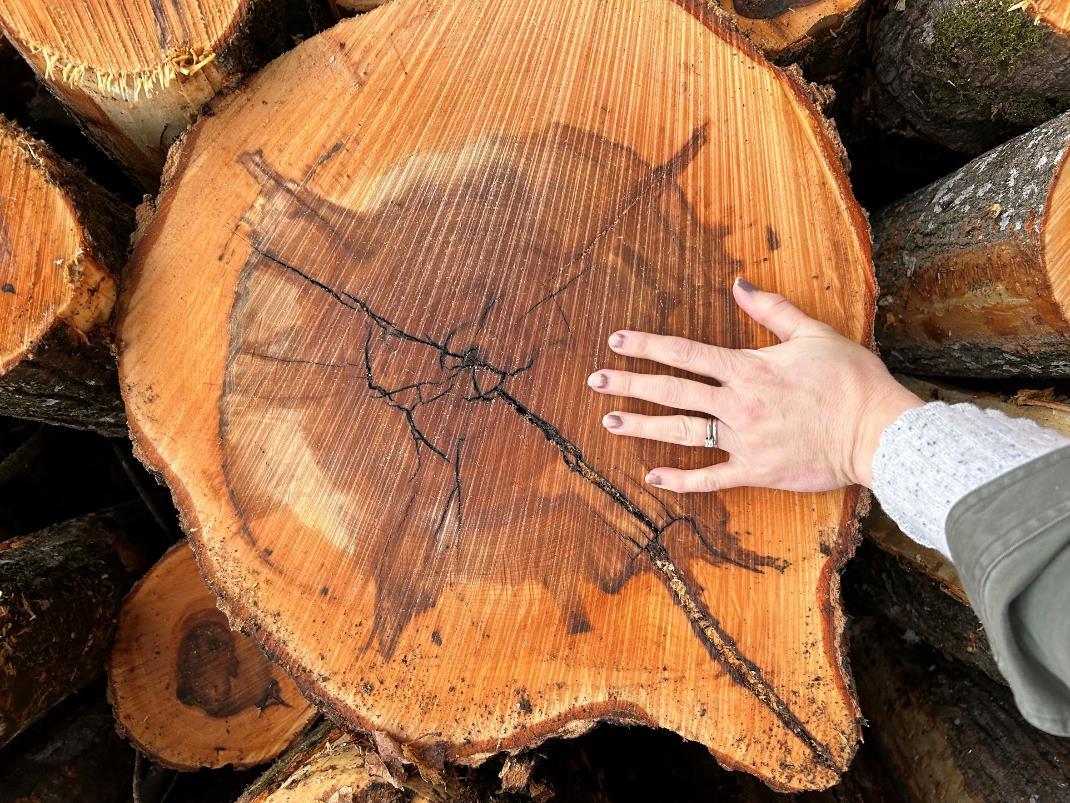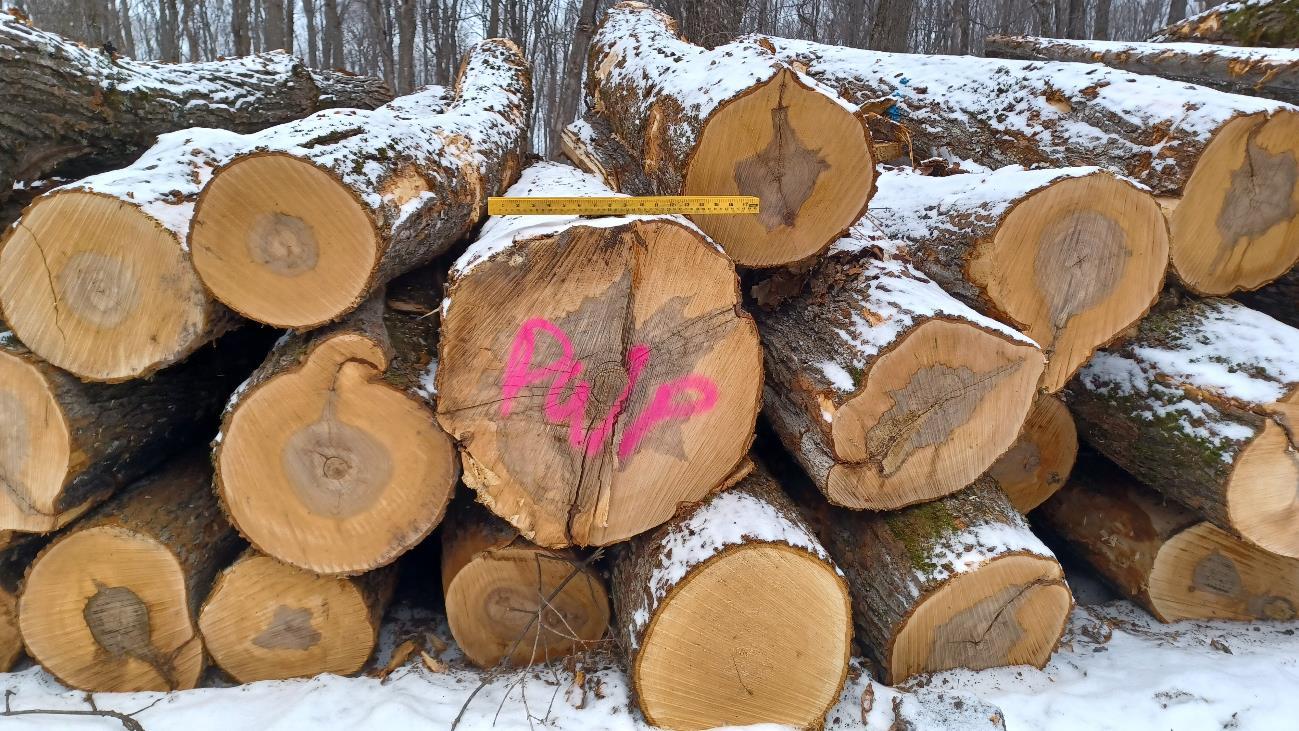Chequamegon-Nicolet National Forest
March 19, 2024
National Forest Visit Shows Need for Strong Forest Protection
The Chequamegon-Nicolet National Forest in Northern Wisconsin is a special place... and one of the most heavily logged national forests in the country
The Chequamegon-Nicolet National Forest (CNNF) in Northern Wisconsin is a special place, providing important ecological systems, biodiversity, and, also, a piece of the puzzle to fight climate change. Unfortunately, the CNNF is one of the most heavily logged national forests in the country.
On a recent visit, I witnessed heavy logging of mature and old-growth trees in our national forest – even as the US Forest Service leadership prepares the Old Growth Plan Amendment.
Background on the Fourmile Logging Project
We were very disappointed when the U.S. Forest Service approved the CNNF Fourmile logging project in 2020, which would aggressively log nearly 12,000 acres. Fourmile was planned and decided entirely under Trump policies to dramatically increase logging with light environmental review and no consideration of the climate consequences.
When the Forest Service made the final Fourmile decision 10 days after the 2020 election, that decision was grandfathered under policies repealed 10 weeks later, on Inauguration Day.
Since the Fourmile decision, President Biden issued numerous strong policies to consider climate impacts of logging projects, to conserve mature and old-growth trees, and to protect biodiversity. ELPC appealed Fourmile based on President Biden’s policies, but the Forest Service has stubbornly insisted on carrying out this logging plan.
Based on Forest Service data, scientific studies, and previous visits, we knew that Fourmile has many mature and old-growth trees that are crucial for storing carbon and critical in the fight against climate change. In September 2023, we organized a petition letter to the Forest Service calling on the agency to pause logging and reconsider Fourmile, to conduct a supplemental environmental review in light of significant new circumstances in policy and science. We’re told the request is still under review.
An Eye-Opening Site Visit
Then in February 2024, we saw the damage with our own eyes, at the “Sunfish” sale in Fourmile. The logged areas used to be thick with mature and old-growth trees, but hundreds of trees were cut leaving over a dozen large stacks of often large logs. They logged with heavy equipment on thawed ground, damaging soils and plants, and leaving ruts in the forest floor. Much of the soil was muddy and there was standing water in spots.
Clearly, the loggers violated contract requirements. Their contract with the USFS states that logging can only be done on frozen ground to protect soils and plants. We promptly acted, filing a complaint with CNNF Forest Supervisor Jenn Youngblood, pointing out that Sunfish loggers violated terms of their contract by operating when the ground was not frozen.
Compounding the injury, it quickly became clear they were cutting not only mature trees (tomorrow’s old-growth), but even old-growth, and a lot of it. Here is a picture of a felled tree that is over 140 years old based on counting the growth rings. There were hundreds of these logs that exceeded the age and size proposed by USFS for the old growth definition in our region.

Sunfish Log Pile, Fourmile Project. Each pin represents 10 years of growth rings and we found the total age is over 140 years. The diameter was measured at 19+ inches wide. All measurements exceed proposed old growth standards for USFS Region 9. February 2024
 One of hundreds of mature or old growth logs cut in the in the Chequamegon-Nicolet NF, Fourmile, near Divide Road. February 2024 Fourmile, Divide Road
One of hundreds of mature or old growth logs cut in the in the Chequamegon-Nicolet NF, Fourmile, near Divide Road. February 2024 Fourmile, Divide Road
USFS must suspend further logging while the project is reviewed. The CNNF estimates that over 80% of the logging will serve pulp (for paper) markets. We have no pulp market urgency but we do have a climate emergency; these trees are more important for climate protection than pulp.

Proof that the Fourmile project pulps old growth in our national forest. Logs are used to manufacture pulp used in a variety of paper products. From the Sunfish timber sale in the Chequamegon-Nicolet NF, February 2024. Diameter exceeds proposed old growth standards for USFS Region 9.
The Climate Forests coalition’s Worth More Standing report from 2022 called out the Fourmile project as one of ten logging projects exemplifying the nationwide targeting of mature and old-growth trees, noting that two-thirds of the stands in the 12,000-acre project are more than 80 years old.
The simple reality is too much is still unknown about the Fourmile logging project. Based on their own documentation from the environmental review, the Forest Service does not know when they log mature and old growth, or the climate impact of their actions.
 A long view of old growth from our national forest.
A long view of old growth from our national forest.
We need a timeout. The Sunfish sale should be analyzed to know the amount of mature and old-growth trees destroyed, and the loss in carbon storage and capture potential.
We do not oppose all logging, but we need better, sustainable logging in our national forests. These exceptionally warm winters make clear that we must conserve mature and old growth trees as one of many climate solutions. The Forest Service and the rest of the logging industry needs to to innovate, improve, and adapt – not deny. Work with us to protect these old growth forests, because we all are feeling the impacts of climate change.


